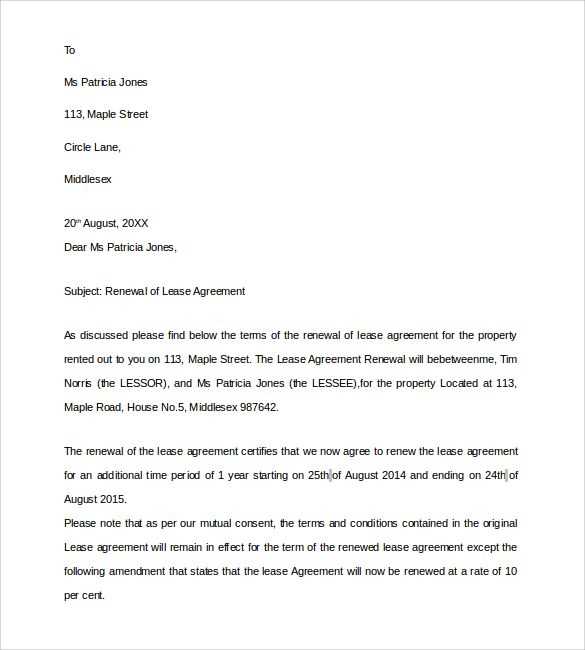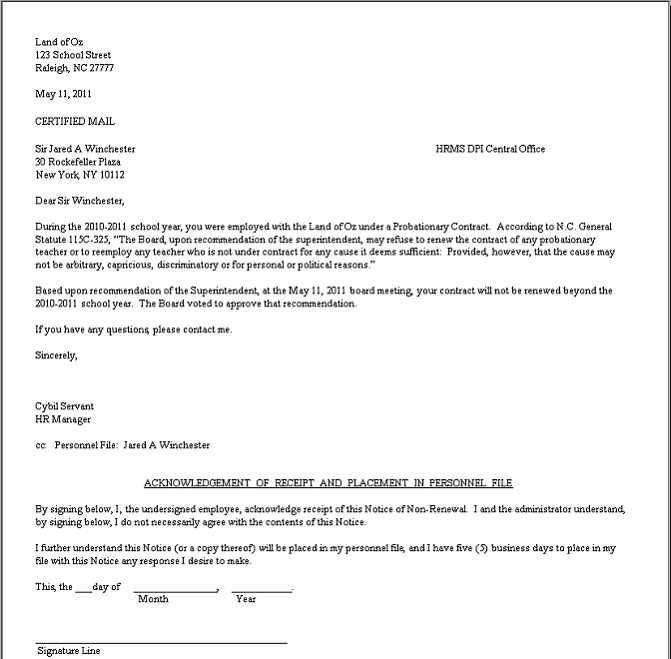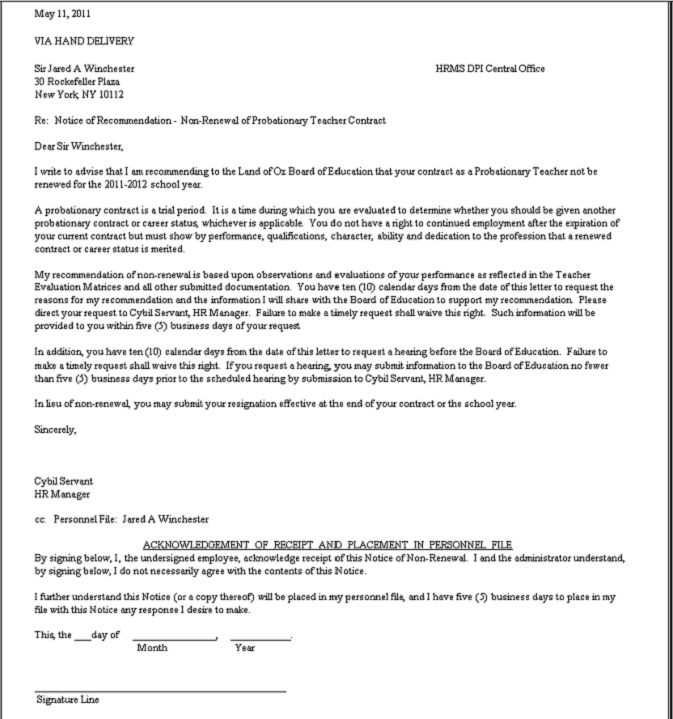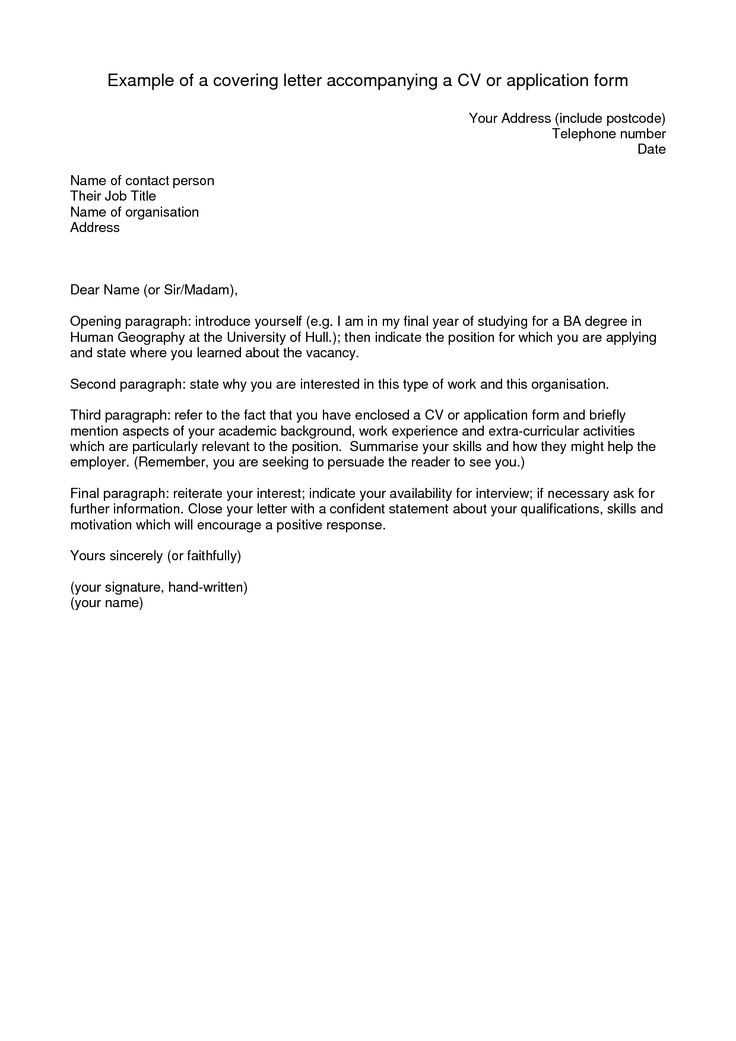Renewal letter template

Use a clear and direct approach when drafting your renewal letter. Start by addressing the recipient in a friendly, professional manner. Clearly state the purpose of the letter, ensuring that the language is straightforward and easy to follow.
Be specific about the terms of the renewal, including any relevant dates or changes to the agreement. Avoid ambiguity to ensure both parties understand the expectations moving forward.
Include a call to action or a request for confirmation. This encourages the recipient to respond in a timely manner, facilitating the renewal process smoothly. Keep the tone polite and appreciative of their continued partnership.
Finally, ensure that the letter is concise. Express your intentions and gratitude without overwhelming the reader with excessive information. Keep your focus on the key details that require attention.
Renewal Letter Template Guide
Begin your renewal letter by addressing the recipient directly, using a polite and clear salutation. State the purpose of the letter early, mentioning the renewal of an agreement, subscription, or service. Be specific about the renewal terms and the timeframe involved, ensuring no ambiguity.
Clear and Concise Details
Provide relevant details regarding the renewal process. For instance, mention the renewal date, price adjustments (if any), and any necessary actions from the recipient’s side, such as confirming renewal or providing payment details. If any new terms are introduced, explain them simply and directly.
Polite and Encouraging Tone
Keep the tone professional yet friendly. Acknowledge the recipient’s previous involvement, express appreciation, and encourage them to continue the relationship. A simple sentence like “We value your continued partnership and look forward to serving you again.” can create a positive impression.
Finally, end the letter with a call to action, such as instructing the recipient to confirm their renewal or reach out for any questions. Be sure to include your contact details for easy communication and to make the process as smooth as possible.
Key Elements to Include in Your Letter
Begin by addressing the recipient clearly, including their name and title. This establishes a personal connection right away. Make sure to include the date at the top, as this helps to track the letter’s relevance over time.
Subject and Purpose
Clearly state the reason for writing early on. This allows the recipient to understand the purpose immediately. Whether it’s a request for renewal or an update, keep it direct and specific. This section should not be buried in the middle of the letter.
Details and Supporting Information
Provide all necessary details that support your request or message. Include dates, numbers, or any other specifics that will help the recipient understand the context. This could be information about a previous agreement, service, or event that the renewal pertains to.
Conclude with a call to action. Clearly state what you expect next–whether it’s a confirmation, response, or further communication. Finally, close the letter with a professional but friendly sign-off.
Personalization Tips for a Professional Tone
Address the recipient by name to create an immediate connection. Use their title or role when relevant, such as “Dear Mr. Smith” or “Dear Team Leader,” rather than generic greetings like “Dear Customer” or “Dear Sir/Madam.” This shows you value the individual rather than treating them as just another name on a list.
Be Specific

Rather than using vague statements, refer to specific details that are relevant to the recipient. Mentioning their recent purchase, previous interactions, or the specific service they used makes the communication feel more personal and tailored to them. For instance, “I hope your recent project with our service was a success” is far more engaging than a generic “I hope you’re doing well.”
Maintain a Respectful, Yet Warm Tone
While you want to personalize the message, remember to keep the tone professional. Avoid overly familiar language or slang that could undermine the professionalism of the communication. A balance between warmth and formality is key. For example, “I look forward to assisting you with any questions you may have” strikes the right tone of both friendliness and professionalism.
Choosing the Right Language for Your Audience
Use clear, straightforward language that aligns with your audience’s familiarity and preferences. Consider the following tips:
- Know your audience’s background: Tailor your tone and vocabulary based on whether your audience is professional, technical, or general. For example, avoid jargon if your audience is not familiar with specialized terms.
- Keep it simple: Use short, direct sentences. Avoid overcomplicated phrasing that may confuse your readers.
- Be consistent: Maintain a consistent tone and style throughout your letter. Switching between formal and casual language can create confusion.
- Consider cultural nuances: Be mindful of any cultural differences in language preferences, idiomatic expressions, or formality levels. This will make your message feel more personal and relevant.
- Use active voice: Active voice makes the message clearer and more engaging. It focuses on the action and the person performing it.
- Address your reader directly: Using “you” helps create a more personal connection and makes the reader feel more involved in the communication.
Adjusting your language ensures your message resonates and is easily understood by the right people.
How to Structure the Content for Clarity
Organize your content with clear, concise headings that guide the reader through the main points. Each section should focus on a single topic, avoiding unnecessary tangents. Begin with a direct statement of purpose or the core message to set the context. Break down complex ideas into manageable chunks and use bullet points or numbered lists for easy scanning.
Ensure each paragraph introduces one idea, supporting it with examples or details that add value. Keep sentences short and straightforward to prevent confusion. Avoid jargon or overly technical terms unless they are necessary for the audience’s understanding.
Use transitions between paragraphs to maintain the flow and keep the reader engaged. Phrases like “in addition,” “next,” or “as a result” help bridge concepts smoothly. Reiterate key points at strategic intervals to reinforce the main message without sounding redundant.
Important Formatting Considerations

Choose a clear and readable font like Arial or Times New Roman, and set it to a size between 10 and 12 points. This ensures that the text remains legible for all readers.
Keep your margins consistent, with at least one inch on each side. This provides ample space for the content and avoids a cluttered look.
- Align your text to the left for easy reading.
- Use single spacing to prevent overcrowding of text.
- Ensure paragraph breaks are clearly visible to separate ideas.
Use bullet points or numbered lists to break down complex information. This allows the reader to quickly absorb key details without losing focus.
- For dates and deadlines, bold the text to make them stand out.
- Important names, numbers, or references can also be highlighted using bold or italics.
Avoid large blocks of text. Divide lengthy paragraphs into smaller sections. Each section should focus on one key point to maintain clarity.
For headings and subheadings, use a larger font size or bold text to create a visual hierarchy, guiding the reader through the content easily.
Examples of Renewal Letters for Different Purposes

Renewal letters vary depending on the purpose. Below are a few examples of how to approach renewal requests for different needs:
Membership Renewal
When renewing a membership, highlight the benefits of continued access and emphasize the value of staying involved. Here’s a sample structure:
| Subject | Membership Renewal Reminder |
|---|---|
| Greeting | Dear [Recipient’s Name], |
| Body | We hope you’ve enjoyed your membership over the past year. As your renewal date approaches, we’d like to remind you of the exclusive benefits you’ll continue to enjoy with another year of membership. To renew, simply [instructions]. |
| Closing | Best regards, [Your Name], [Your Position], [Organization] |
Subscription Renewal
For subscriptions, it’s important to remind the recipient of the convenience they will continue to experience. A friendly tone encourages action:
| Subject | Your Subscription is About to Expire |
|---|---|
| Greeting | Hi [Recipient’s Name], |
| Body | We noticed that your [service/product] subscription is about to expire. To avoid interruption and continue enjoying [benefits], please renew by [date]. Click here to renew now. |
| Closing | Best regards, [Your Name], [Your Position], [Company] |
Contract Renewal
For contracts, it’s essential to mention the terms and conditions of renewal along with the process for agreeing to the new terms:
| Subject | Contract Renewal Notification |
|---|---|
| Greeting | Dear [Recipient’s Name], |
| Body | Your current contract with [Company Name] is due for renewal on [date]. Attached are the terms for the new agreement. If you wish to proceed, please sign and return the contract by [date]. |
| Closing | Sincerely, [Your Name], [Your Position], [Company] |